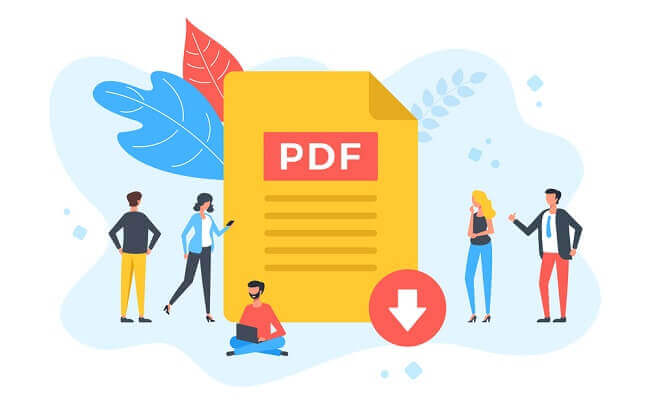In today’s digitally driven world, file conversion has emerged as an indispensable tool for facilitating seamless data interchange across diverse platforms and scenarios.
The ability to turn spreadsheets into PDFs, among other conversions, underscores the importance of this adaptability in modern workflows. While the convenience of transforming formats offers undeniable benefits, it’s essential to tread with caution and prioritize data safety and integrity.
Why Convert Files?
File conversion is an essential process in today’s digital landscape. It primarily ensures universal compatibility across diverse software and devices, allowing users from different platforms to access and interpret data seamlessly.
Converting files can aid in the preservation and long-term storage of data, especially when turning documents into non-editable formats like PDFs. This ensures that the integrity of the information remains unchanged over time.
Specific file formats, such as PDFs, offer enhanced security features, including password protection and encryption, safeguarding sensitive information from unauthorized access.
Conversions can streamline collaboration. When sharing data with peers who may not have expertise in specialized software, converting files to more universally accepted or accessible formats can facilitate smoother interactions and teamwork.
Understanding Different File Types
Navigating the digital world requires an understanding of various file formats, each tailored for specific tasks and functionalities. Spreadsheets, like XLS or XLSX, are native to Microsoft Excel and adept at handling complex data analyses and computations, while CSV offers a simpler, universal representation of tabular data.
On the other hand, PDFs stand as a paragon of consistency, ensuring documents appear identical across all devices, combining portability with a reliable and secure user experience.
Word documents, primarily in DOC or DOCX formats, are the backbone of text processing. Native to Microsoft Word, they offer extensive editing capabilities, making them ideal for crafting textual content, reports, and collaborative tasks.
Recognizing the strengths and purposes of these formats enables more effective digital communication and data presentation.
Tools and Methods for Seamless Conversion
In the era of digital documentation and collaboration, the ability to convert files effortlessly from one format to another is paramount. Here’s a closer look at the tools and methods available for seamless conversion:
- Built-in Software Tools: Most established office software suites, such as Microsoft Office and Google Workspace, come with built-in file conversion options.
- Online Conversion Tools: The internet is rife with free online conversion platforms. While these are incredibly convenient, it’s essential to approach them with caution, especially when dealing with confidential or sensitive data, as uploading to an external server always carries some risk.
- Dedicated Conversion Software: For those requiring frequent or more advanced conversions, dedicated software solutions might be the answer. These programs offer a range of features, including batch conversions, format retention, and more advanced security options.
- Mobile Apps: With the ubiquity of smartphones and tablets, several mobile apps have emerged to facilitate on-the-go conversions.
- Extensions and Plugins: Some browsers and software applications support extensions or plugins designed to enhance conversion capabilities.
Step-by-Step Guide for Common Conversions
Spreadsheets (Excel) to PDF:
Microsoft Excel:
- Open your spreadsheet in Microsoft Excel.
- Go to the ‘File’ tab.
- Select ‘Save As.’
- Choose the location to save your file.
- From the dropdown menu, select ‘PDF.’
- Click ‘Save.’
Google Sheets:
- Open your spreadsheet in Google Sheets.
- Click on ‘File.’
- Hover over ‘Download.’
- Select ‘PDF Document.’
Word Document to PDF:
Microsoft Word:
- Open your document in Microsoft Word.
- Go to the ‘File’ tab.
- Select ‘Save As.’
- Choose where you want to save your file.
- From the dropdown menu, select ‘PDF.’
- Click ‘Save.’
Spreadsheets to CSV:
Microsoft Excel:
- Open your spreadsheet in Microsoft Excel.
- Go to the ‘File’ tab.
- Select ‘Save As.’
- Choose the location to save your file.
- From the dropdown menu, select ‘CSV (Comma delimited).’
- Click ‘Save.’
Google Sheets:
- Open your spreadsheet in Google Sheets.
- Click on ‘File.’
- Hover over ‘Download.’
- Select ‘Comma-separated values (CSV).’
PDF to Word:
Using Adobe Acrobat:
- Open your PDF in Adobe Acrobat.
- Click on ‘Export PDF’ on the right pane.
- Choose ‘Microsoft Word.’
- Select ‘Word Document.’
- Click ‘Export.’
- Choose a location, name your file, and save.
Safety and Security Concerns
Safety and security concerns are paramount when converting files. Online tools, while convenient, can pose risks as uploading sensitive data to external servers exposes it to potential breaches.
Ensuring encrypted transmissions is crucial to prevent data interception. Always opt for reputable conversion sites with clear privacy policies.
Dedicated conversion software can offer more robust security features. Regardless of the method, one must be vigilant about the software’s origins and permissions, ensuring no unintentional data leakage or malware infiltration.
Conclusion
In the digital era, file conversion has emerged as a vital tool, facilitating seamless data interchange across diverse platforms. While the convenience of transforming formats has undeniable benefits, it’s imperative to tread with caution, prioritizing data safety and integrity.
By choosing reliable tools and being aware of potential security pitfalls, users can harness the power of conversion to enhance collaboration and productivity. As technology evolves, staying informed and adaptable remains the key to leveraging these tools effectively.




